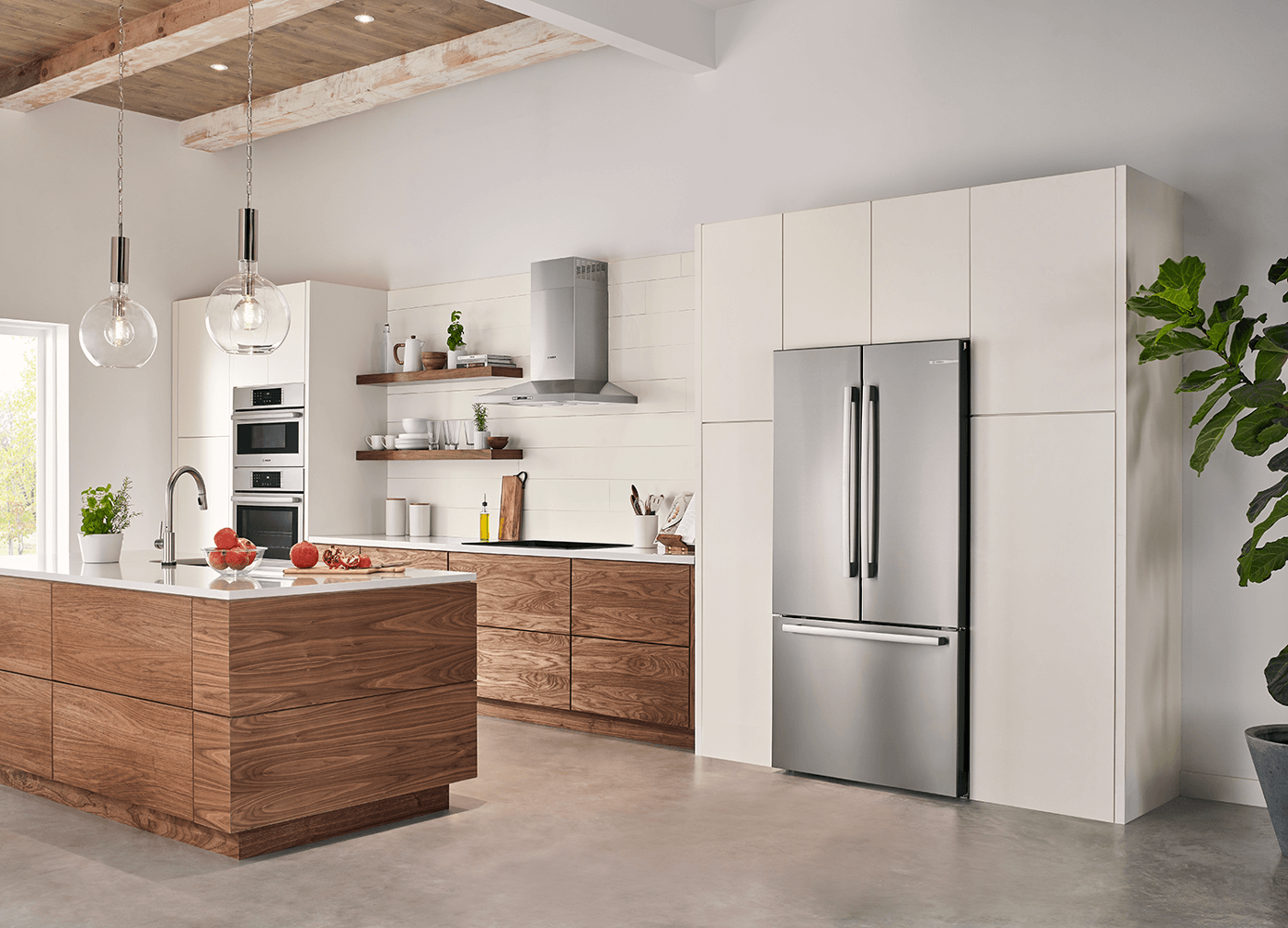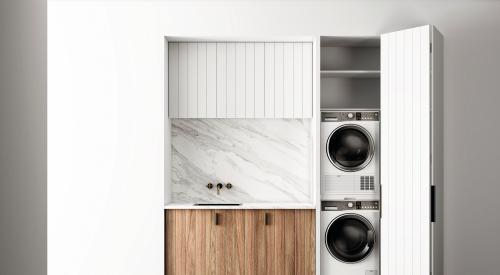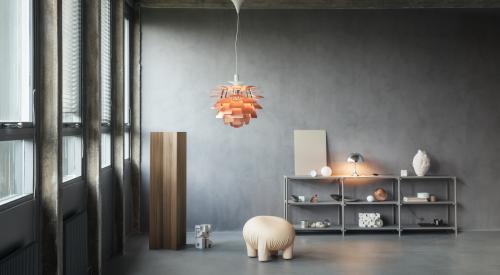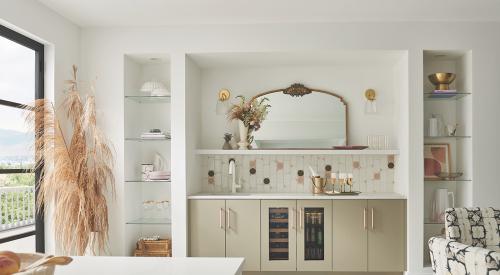Built-in refrigerators give kitchens a clean, contemporary look, but their prices make them unattainable for many projects. There are ways around that.
A common sight in high-end homes and remodels, the built-in refrigerator has increased in popularity and is desirable by consumers on the entry level because of the polished look it achieves.
Measuring no more than 24 inches deep (flush with the counter), the units are readily available in a variety of sizes and with the ability to accept panels that match the cabinets in the kitchen. Most built-in fridges have the compressors that sit on top of the units, so they are taller, while some have two compressors—for each compartment—resulting in optimal refrigeration.
But built-in refrigerators are expensive, ranging in prices from $6,000 to as high as $12,000 and more. So how do you make a refrigerator look built in without breaking the bank? One alternative is to consider a freestanding counter-depth refrigerator that sticks out a lot less than typical units.
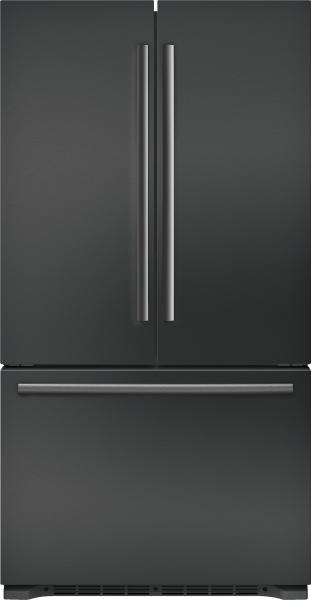
Bosch 800 Series refrigerator
“The shallow depth makes it easier to grab items near the back of the fridge,” the appliances supplier Designer Home Surplus says. “You can install a counter depth refrigerator without remodeling your entire kitchen, because they are manufactured in standard sizes and will most likely fit in your current refrigerator space. This gives your kitchen a unified look without the expense of using built-in appliances, which require specific cutouts or cabinets to be built around them.”
One more thing, because counter depth refrigerators are wider than standard depth refrigerators, users are able to store bigger party platters and trays with ease and the shallow depth allows homeowners to reach the back of the fridge easily, Designer Home Surplus adds.
Freestanding counter-depth units offer an improved look, but they still don’t achieve the look of a true built in refrigerator.
Designers have some clever work-arounds and strategies to achieve a true built in refrigerator look for a lot less money.
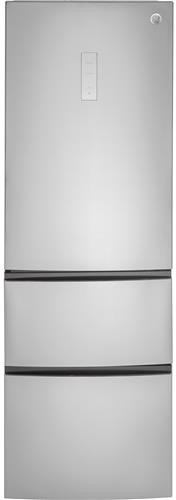
GE 24-inch bottom-mount refrigerator
“If we have room, I push the fridge back into the wall to reduce the aisle width a standard depth fridge will encroach,” says Jan Neiges, CKD, a kitchen designer in Highlands Ranch, Colo. “Adding ¾-inch panels left and right of fridge along with a deep cabinet above the fridge provides that built-in look.”
Designer Melanie Zarry, CKD, CBD, pursues a similar strategy. “When a client does not have the budget for a fully built-in fridge, I will use two different tricks,” the president of Kaza Design Group in Calgary, Alberta (Canada) says. “One is to recess it back in to the wall—typically it is a 2 by 4 wall, so this can gain us 3 inches. The second strategy is to make deeper gables (panels) on the sides which helps it appear more built in.
“You do need to check each appliance specification closely, as some hinges will not clear a deeper panel without the door binding,” Zarry continues. “Some also require a certain clearance to the side wall—sometimes as much as 18 inches—for the door to open far enough for the baskets inside to be able to fully open.”
If the space is not available to push the refrigertor back into the wall, Neiges has another solution. “Instead of using ¾-inch panels to the left and right of the fridge to box it in, I have used wide box fillers—about 3 inches wide.”
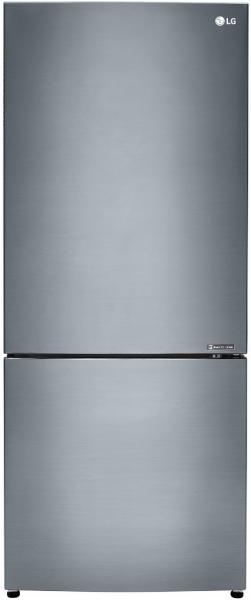
LG 28-inch counter depth refrigerator
In one recent project, Neiges designed storage units to the left and right of a freestanding fridge and added a stainless steel door on the cabinet above to match the stainless on the fridge.
Designer Lisa Davenport says choosing the right counter-depth unit goes a long way. “Stay with stylings that are more square and not an arched or rounded door style,” says the principal of Lisa Davenport Designs in Middlefield, Conn., and Naples, Fla. “This gives a cleaner transition from refrigerator door to the cabinetry.”
Davenport says she prefers to use a counter-depth, side-by-side fridge to give it the built-in treatment. “It's easier to give the appearance of built in with this styling,” she says.
“Always use a surround or filler to 'case out' the refrigerator, paying close attention to the manufacturer's venting requirements, and let's not forget to watch the angles needed for the door swing,” Davenport concludes.

Liebherr 30-inch bottom-mount refrigerator
“Along with the deeper gables, I always put a deeper cabinet over top of the fridge, as deep as the gables,” Zarry says. "This not only looks better, but it’s more functional, as it is easier to reach inside. If there is not enough height left for a deeper cabinet then I would fill it in with a panel to the ceiling. Many non-built-in fridges can still be paneled to match the cabinets, so that would be another trick.”
For her part, Zarry prefers to use a bottom-mount unit, which is by far the most popular fridge option these days. “They are easier to access and are more functional,” she says. “I am also doing a lot of French doors, as this helps with walk space clearance.”
But there are other considerations when working with a freestanding counter-depth fridge. The first issue is the depth of the unit, says contractor and kitchen designer Art Childers. Though they are not as deep as traditional freestanding units, they still stick out some.
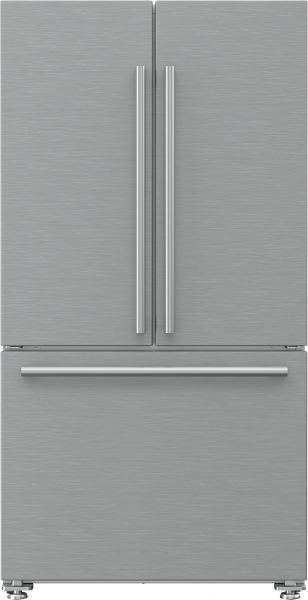
Blomberg 36-inch French door refrigerator
“The second and most important issue is circulation,” Childers says. “Closing in the sides is not a problem, although since most free-standing units have some clearances around the bottom, back and top of the unit. There is typically sufficient convective and fan blown air movement to keep the motor cool, which is of primary concern.”
Consideration for the hinges is also important. “If the hinges are attached to the top of the unit they can be difficult to cover, Childers says. “Units with the hinges like Liebherr’s are best for such an arrangement.”

Samsung 36-inch 4-door refrigerator
